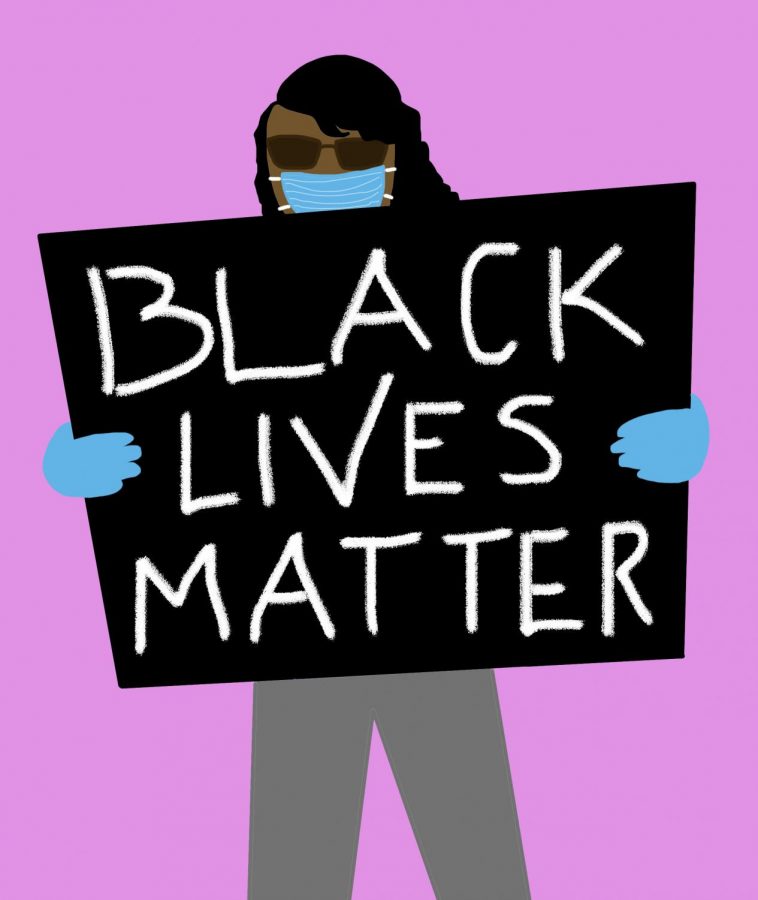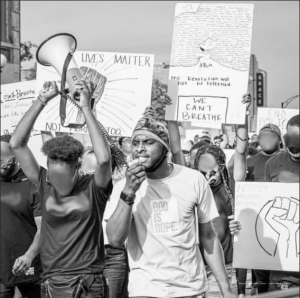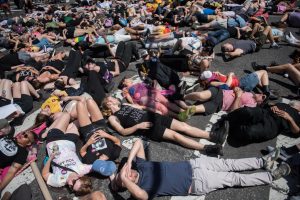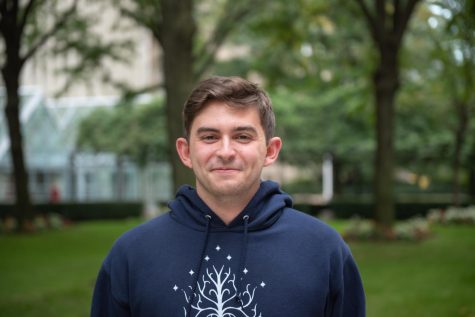Protesting in Light of COVID-19
As millions of Americans take to the streets to protest, they should also remain vigilant in protecting themselves and others from COVID-19.
June 19, 2020
In recent weeks, social unrest and the COVID-19 health crisis have been competing for the public’s collective attention. The rival world events have many people caught between a desire to promote change and a responsibility to prevent the pandemic’s spread.
Americans across the nation, outraged about the police brutality that has claimed the lives of Black Americans, have reconvened in public to protest and demand change. This social outcry comes after months of economic devastation and more than 100,000 deaths nationwide at the hands of the pandemic, which has forced many people to stay at home in order to slow the disease’s spread.
Despite having already peaked in certain areas, COVID-19 is still very much active across the country, as many states are still reporting upward curves in infection rates and new hot spots are emerging. Though protesting is an important right afforded to citizens, in a world still afflicted by disease, it is paramount that people make their voices heard within the constraints of current health protocols.
“An individual can demonstrate safely if done in accordance with local government and health departments,” Maureen Keown, director of University Health Services, said.
Keown recommends that everyone should wear a face mask and keep a distance of 6 feet between themselves and others. Although she provided proper guidelines to protest, she also noted that the danger lay in the public displays that don’t enforce those protocols.
“People who choose to protest need to be careful and must follow public health guidance in order to safely attend a demonstration,” Keown said. She continued to say that protesters who shirk social distancing guidelines risk increasing infection rates within their own community.
While all the protests and marches have taken place outside, research shows that it is less likely — but not impossible — to contract the virus outdoors. An outbreak linked to a choir practice in Washington state has left many concerned that shouting and chanting will have the same effect.
Keown echoed these concerns and warned, “If an individual moves their mask to shout out, they can potentially infect other people. They could then go home and potentially infect family members.”
Even with the concerns that protesting could lead to a spike in infections, the World Health Organization (WHO) has expressed its support for the movement. WHO Director-General Tedors Adhanom Ghebreysus stated that the “WHO fully supports equality and the global movement against racism. We reject discrimination of all kinds. We encourage all those protesting around the world to do so safely.”
In an effort to ensure safe protesting, Denver Mayor Michael Hancock has announced free testing for demonstrators, and officials in Atlanta and New York, where testing is free, are encouraging that all protesters get tested for the coronavirus.
While acknowledging the risks of gathering in large groups, meeting up with like-minded individuals in protest can still be done safely. Keown recommends that protesters read the Centers for Disease Control and Prevention’s guidelines to inform themselves on how to organize safely.
For those at high risk of developing complications from the coronavirus and who are unable to physically attend marches, there are still ways to contribute to the movement. Keown recommends finding ways to indirectly contribute to the movement, like “using social media platforms and verbalizing concerns to government officials through phone, email and letter.”
Health care organizations, as important as they are in the fight against COVID-19, are also not devoid of racism. The pandemic has affected Black communities across the country more severely than other communities. Although Black people account for 12.4% of the population in the U.S., they have suffered 24% of known COVID-19 deaths.
Studies have also shown that services for COVID-19, such as testing and various treatments, are not as readily available for many minority and Black communities. The disproportionate effects on Black communities have been cited as an example of the prevalence of medical racism in the U.S.
On June 3, the Cleveland City Council passed a resolution declaring racism a public health crisis and stating that it has a negative impact on outcomes of the pandemic. Similar motions have been passed across the country as recently as June 16, when Dallas County officials voted to approve a resolution calling for increased equity in the maintenance of public health and other services. Public health, an institution central to society, has an equally interwoven history with racism.
Protesting, especially when conflated with the current public health crisis, can be dangerous. However, when the right safety precautions are taken, protesting can continue being a powerful tool to enact change within our communities, health care providers and public safety institutions.


















